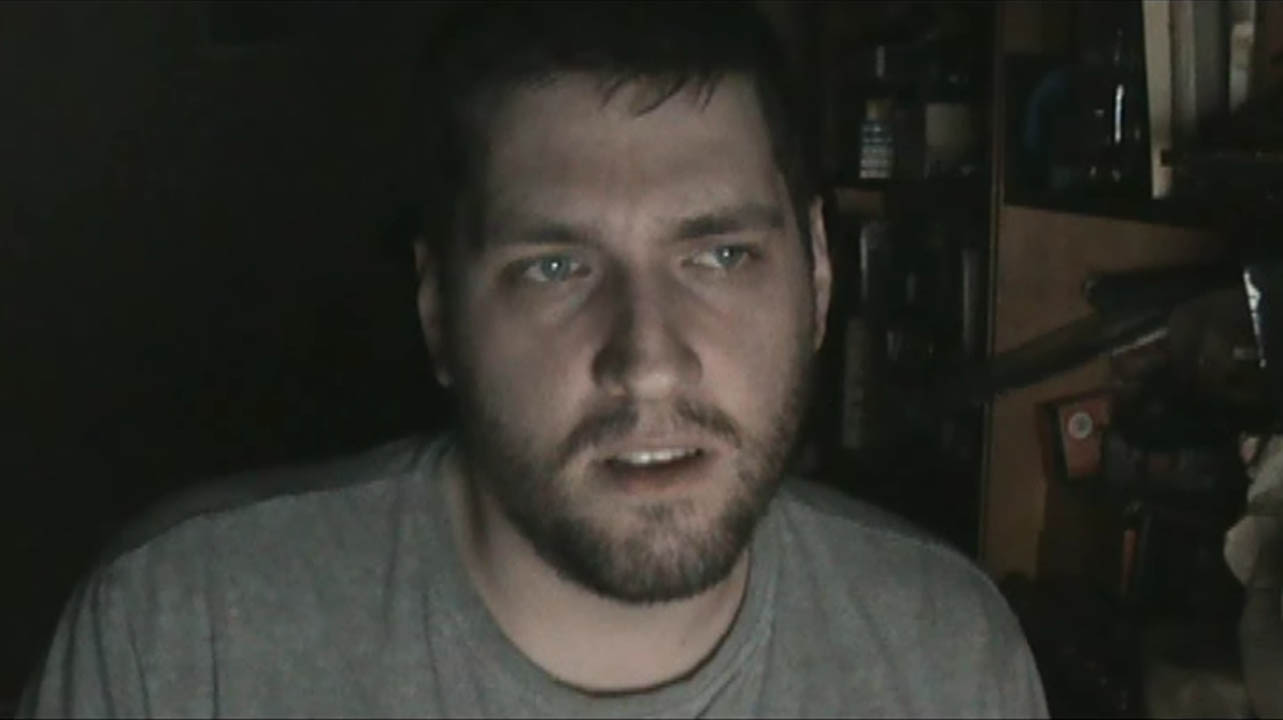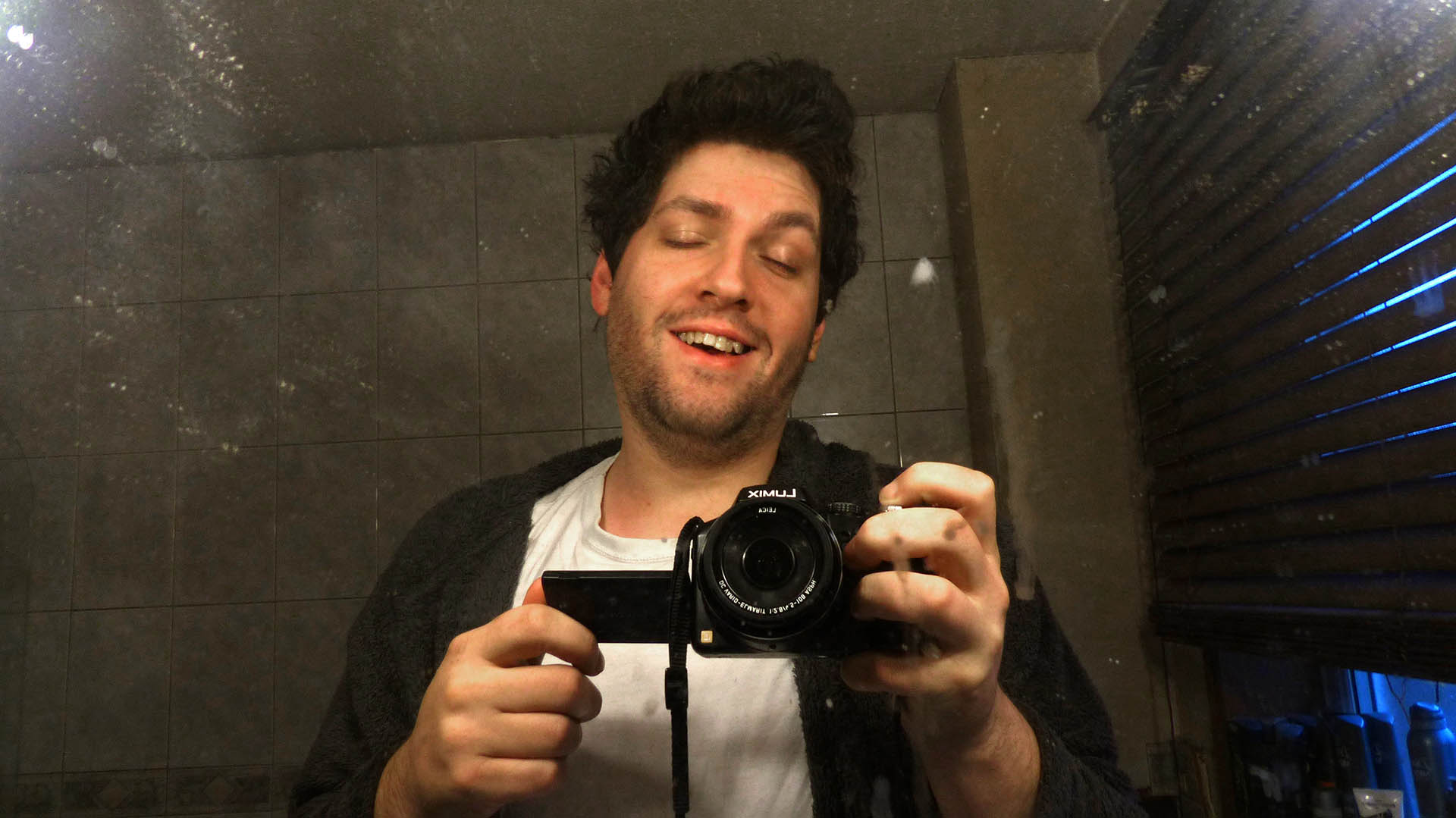In 2007 I discovered libertarianism. This was a handy refuge from my depression. I resented the government because I resented my society and the life that I had carved in it. I convinced myself that maximum freedom was the answer. Deep down I was unsatisfied with this; it seemed simplistic. But I was able to delude myself and just keep "believing" - awareness of one's own ability to engage in delusion was something I was yet to obtain.
In 2008 I had a manic episode, a psychological crisis, some kind of breakdown. My desperate faith in "freedom" was shattered, revealed as an utterly inadequate prescription for the panoply of human problems. For several months afterward I had no interest in politics or anything serious at all; I was in a sort of daze. I only knew that I had somehow survived, and now wanted to find some kind of sanity. Among other things, I was now aware that I had been deluding myself, and that meant also that I was aware of my fallibility. This was a crucial lesson. It meant that Man is a fallen creature, after all.
Shortly thereafter I discovered the writing of Theodore Dalrymple, the retired prison doctor and psychiatrist. I devoured his books Our Culture, What's Left of It and his excellent essays, such as What We Have to Lose, All Our Pomp of Yesterday and How, and How Not, to Love Mankind. Dalrymple had arrived in my life at exactly the right time, offering me the refuge of paleoconservatism, a much more subtle, perceptive and intellectually-curious alternative to libertarianism.
In 2011 I joined the newly-created Theodore Dalrymple forum. This was an unofficial forum dedicated, in theory, to the works and wisdom of the man, but we quickly gravitated to more hard-line ideas - namely race realism and the need for authority to put things right.
However, just as I had tired of the false certainty of libertarianism, I began to find paleoconservatism unrewarding, uninspiring, depressing, and even unconvincing. It is not enough to simply be against the modern world, and to assume the worst about every new thing. It is also not honest; I enjoy some things about the age we live in. Moreover, implicit in paleoconservatism seems to be a defeatist instinct, a sad resignation that nothing can be done about decline, and that we must just maintain our little bit of civilisation until the barbarians come and destroy it, and that under no circumstances should we be pre-emptively aggressive in order to protect everything. That attitude is indulgent and effete - I would also say it is quite feminine, because it is basically a "hope that someone else rescues us" attitude. It does not befit men, who would see themselves as the protectors of their society - even if that sometimes requires being aggressive and putting comforting principles aside in order to do what is right. This is the difference between a conservative and a reactionary.
On the 11th of April 2013, somebody posted a video on the forum, Davis MJ Aurini's analysis of Bane in The Dark Knight Rises. Immediately, I was entranced. There was something very new about Aurini. He was right-wing, in that he understood the absurdity of multiculturalism, mass immigration, feminism and equality, and the destructive effects of welfare and Socialism... but he also understood that we young right-wing rebels of 2013 would not belong in the past, in any era.
We are products of our time. Unlike the closed-minded conservative of the 1950s, we are not fearful or perplexed about homosexuality or drug use or rebellion. Some of us even indulge in these things ourselves. But we recognise that they should never, ever, be mainstream. We live on the edge of society because it is our natural habitat, not because we despise the mainstream or wish to destroy it; in fact, because we wish to protect it. We recognise that, though the mainstream is too narrow and prescriptive for us, it is what most people need, and also that we can carve out a life for ourselves outside it, serving it in our own ways.
This was my introduction to the "manosphere", the "Dark Enlightenment" or, my preferred name for it, the Reactosphere.
So that's what I was. I wasn't a conservative, a libertarian or a paleocon; I was a neoreactionary. Discovering the neoreaction scene, after two years on the Dalrymple forum working on similar ideas ourselves, was a real surprise, but a pleasant one. We were able to plug into a much larger body of thought that was more advanced in some ways than our own. Also, it simply involved a much larger number of people, so we - the small band of people on that forum - realised we were not alone in our disillusionment with mainstream conservatism (both in practice and in theory) and our curiosity about integrating traditionalist ideas with modern modes of living.
The decision to create my own outlet on the Internet was made quite suddenly, in mid-October 2013. This was six months after discovering Aurini. My initial decision was to start a blog. The title (and aesthetic) was going to be:

But pretty soon, I realised I had had enough of writing, having written many posts and essays for the Dalrymple forum. I struggled to muster enthusiasm for writing a blog. But still, I wanted to do something. The spark of "putting myself out there" had been lit*.
In recent months I had been doing video readings for Internet friends in other countries. I would film myself reading some of my own fiction, and send it to them over MediaFire. These videos were made with a mid-range camcorder and shot in my room at home. The format was arrived at quite prosaically: the videos had to be filmed in my room, with me sitting at my computer, because the text I was reading was on my computer. I thought it would be distracting for my viewer if I had the lights on, so I switched them off. To ameliorate the darkness, I had a few candles burning throughout each reading. It was an atmosphere conducive to having relaxed, intimate chats with my friends in other countries.

It was an obvious jump to doing exactly the same thing but for a much wider audience, on Youtube. I would not have a blog, but a vlog.
It didn't occur to me until a long time later, that I had actually been "training" for this kind of thing for many years. In my head, I used to go through monologues, grappling with a random question and seeing where it took me. This would be essentially what I would do during the first year of my channel, and beyond.
But at the time, back in October 2013, I didn't realise this. The fact was, regardless of what I had been doing in my own head for many years, doing it out loud would be a new thing for me, and doing a vlog would certainly be new for me - a new challenge, and one I couldn't believe I had never taken on before. I was excited.
Progress was very fast. I changed the title to "Millennial Woes" and came up with a new aesthetic. The "look" would not be wartime, but Victorian, inspired by a quote from Dalrymple:
I chose a name that sounded suitably dyspeptic, that of a gouty old man looking out of the window of his London club, port in hand, lamenting the degenerating state of the world.The font (Multiform Caps) was found, and the logo was made:

The Youtube channel was created on the 16th of December, 2013. On the same day, the Facebook page was created and the domain name millennialwoes.com registered.
I knew that I was going to be receiving a new camera for Christmas. It would be better (image quality, High Definition) than the camcorder I had been using, so it seemed sensible to delay filming videos until then. I decided on a timetable: I would create ornate opening and closing sequences for the videos, make a "trailer" which would be uploaded on the first Sunday of 2014, and plan some videos to film once I got the camera.
The first priority, then, was the opening and closing sequences. I recalled the trailer for Mary Shelley's Frankenstein (1994), full of thunder and lightning and a sense of looming catastrophe. This seemed the perfect tone for the channel: brooding, scary, apocalyptic.
With the title sequences done, my next priority was the trailer. This was made using "found footage" of things that summed up the dire state of Western civilisation. Inspired by the Frankenstein trailer, the soundtrack was Philip Glass's wonderful Itaipu: The Lake.
On Christmas Day I received the camera.

Obviously I should have got to know the camera before filming with it, but I was too enthusiastic for that. I began filming videos just three days later. My idea was to upload one every Sunday evening. I thought it would be a good idea to have videos stockpiled so that I would never be caught on the hop; there would always be one ready for uploading. I thought it would be wise to have maybe five or six videos stockpiled like this so happily started filming.
What actually happened was a burst of activity. One idea occured to me after another. I jotted down titles and scored them off as I filmed them, lost in the thrill of getting things done. The first few videos were clumsy; after a few days' practice they were much better.
The trailer was uploaded as planned on the 5th of January. You can watch it here.
The next Sunday, I uploaded two introductory videos - one about myself and one about the channel.
And then the regular videos started going out.
I only continued the "every Sunday evening" thing for one month. By February I had a staggering 125 videos filmed and ready, far more than I had ever envisaged making. It was obvious that daily uploading was the only way to dispatch them all. So, from the 2nd of February onwards, at least one video was uploaded every day.
Channel take-up was slow. I was waylaid with making videos and, in any case, had no idea how to market something. From the beginning, though, I had several loyal subscribers who posted comments and shared my videos, which helped to spread awareness of the channel. On the 11th of February I uploaded a video with a very controversial title, which accidentally helped to publicise the channel. A few weeks later, Aurini "liked" one of my videos and the subscribership began to grow much faster. After all the work I'd put in, this was encouraging.
By this time I had incorporated readings of other people's work into the channel, in the form of The Wednesday Readings. A special opening sequence was made for these, and also for "newsflash" videos where I gave the viewers some piece of news about the channel. *